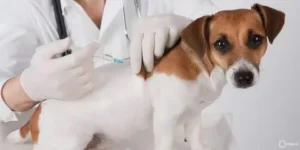
Comprehensive Guide to Artificial Insemination & Stud Services for Healthy Offspring
In the world of animal breeding, ensuring healthy litters and genetically sound offspring is a top priority. Artificial Insemination and stud services have emerged as vital tools in achieving this goal. Whether you’re an experienced breeder or just starting out, understanding these breeding methods, along with essential practices like vaccinations and de-worming, is crucial for the health and longevity of your animals.
Advantages of Artificial Insemination:
- Reduces the risk of injury to both male and female animals
- Allows long-distance genetic exchange
- Increases the chances of conception with quality semen
- Facilitates controlled breeding cycles
Why Use Artificial Insemination? Artificial Insemination is especially beneficial when dealing with animals that are geographically distant or when a natural mating presents physical or behavioral challenges. It also allows breeders to access superior genetics, boosting the quality and health of future litters.
When to Consider AI
- When physical mating is risky
- To preserve the genetics of a champion stud
- In cases of low sperm count, with concentrated semen
- To avoid sexually transmitted infections
Choosing the Right Stud
- Health-tested and proven fertile
- Up-to-date on vaccinations and de-worming
- Documented lineage and show performance
- Temperament and physical conformation
Benefits of Professional Stud Services:
- Access to high-quality genetics
- Assistance with timing and mating logistics
- Expertise in handling and insemination procedures
- Often includes AI services and pregnancy tracking

Vaccinations:
- Essential for disease prevention
- Should be updated before breeding
- Common vaccines include distemper, parvo, and rabies
De-Worming:
- Prevents parasites that can harm the female and her litter
- Important to schedule de-worming before mating
- Should be maintained through pregnancy and nursing
- Semen Collection: High-quality semen is collected from the stud.
- Evaluation: The semen is evaluated for motility, morphology, and concentration.
- Processing: It may be extended or frozen depending on timing and distance.
- Insemination Timing: Ovulation tracking ensures optimal timing.
- Insertion: Semen is inserted into the female using sterile techniques.
- Confirmation: Pregnancy tests are conducted to confirm success.
Monitoring After Insemination
- Regular veterinary checkups
- Nutritional support
- Monitoring for signs of pregnancy and complications
- Genetic Compatibility: Ensures healthy litters free of hereditary conditions
- Health Status: Updated vaccinations and de-worming are mandatory
- Veterinary Support: Always involve a vet for advice and supervision
- Record Keeping: Maintain detailed records of cycles, semen analysis, and health history
Artificial Insemination vs. Natural Breeding
| Aspect | Artificial Insemination | Natural Breeding |
|---|---|---|
| Safety | Safer for animals | Risk of injury or aggression |
| Disease Transmission | Minimal | Higher risk |
| Genetic Access | Global access to studs | Limited to local males |
| Timing Control | Precisely timed | Less predictable |
Responsibilities of a Breeder:
- Maintain health through regular vet care
- Ensure complete vaccinations and de-worming
- Avoid overbreeding
- Socialize and care for offspring
- Artificial Insemination enhances genetic quality and safety
- Stud services provide access to champion bloodlines
- Vaccinations are critical to prevent infectious diseases
- De-worming ensures the health of the mother and litter
- Breeding should be planned, ethical, and supported by veterinary professionals